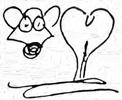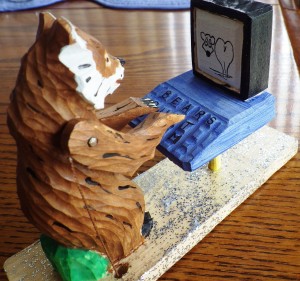By: Bears Butt

There is a masterpiece of workmanship in Salt Lake City, Utah called the Temple. It’s located right in the heart of downtown and can be seen for miles around. To think of all the hard work that went into building that structure back in the late 1800’s is mind boggling. Huge blocks of quarts rock were quarried, chiseled and crafted into the shapes they needed and then carefully fit into place.
How those men were able to do that heavy work without today’s modern machinery amazes me to no end. The quality of the outcome is nothing short of a miracle.
When you look closely at the Temple you can see all sorts of ornate things carved in the rock walls, each having a special meaning and all leading back to a strong belief in God and all He created.
http://www.ldschurchtemples.com/saltlake/
Temple Symbolism
Rich symbolism adorns the exterior of the Salt Lake Temple, depicting mankind’s journey from mortality into the eternal realms. Perhaps Elder J. Golden Kimball expressed it best when he stated: “When I think about that building, every stone in it is a sermon to me.”1 Following is a summary of some of the major symbolism of the Salt Lake Temple:
Angel Moroni. The angel Moroni depicts both a messenger of the restoration of the gospel and a herald of the Second Coming: “for the Son of Man shall come, and he shall send his angels before him with the great sound of a trumpet, and they shall gather together the remainder of his elect from the four winds” (JS-M 1:37).
Towers. The three towers on the east side represent the First Presidency of the Church and the Melchizedek Priesthood; the twelve pinnacles rising from the towers represent the Twelve Apostles. The three towers on the west side represent the Presiding Bishopric and the Aaronic Priesthood; the twelve pinnacles rising from the towers represent the High Council.
Battlements. The castle-like battlements that surround the temple symbolize a separation from the world as well as a protection of the holy ordinances practiced within its walls.
Earthstones. The earthstones, located at the base of each buttress, represent the earth—the “footstool of God.” Although the earth is currently a telestial kingdom, it will transition to a terrestrial kingdom at the coming of the Millennium; and at the end of one thousand years, it is destined to become a celestial kingdom.
Moonstones. Located directly above the earthstones, the moon is depicted in its various phases around the temple. The changing moon can represent the stages of human progression from birth to resurrection or represent the patron’s journey from darkness to light.
Sunstones. Located directly above the moonstones, the sunstones depict the sun—a symbol of the glory of the celestial kingdom.
Cloudstones. High above the sunstones on the east center tower are two clouds with descending rays of light (originally planned to be one white and one black with descending trumpets.) The parallel of this symbolism is found in the Old Testament. Once temples were dedicated in ancient Israel, they were filled with the “cloud of the Lord.” At Mount Sinai, the children of Israel saw this cloud as both dark and bright accompanied by the blasting of a trumpet.
Starstones. Six-pointed stars represent the actual stars in the heaven. Upside-down five-pointed stars represent morning stars, compared to the “sons of God” in the scriptures. The large upright five-pointed stars may represent the governing power of the priesthood while the small upright five-pointed stars may represent the saving power of the priesthood for those who attach themselves to it.
Big Dipper. High on the west center tower is a depiction of the Big Dipper, a constellation used by travelers for thousands of years to find the North Star. It is an appropriate symbol for the temple where patrons come to get their bearings on the journey home.
Handclasp. Each of the center towers features a pair of clasped right hands identified as the “right hands of fellowship” cited in Galatians 2:9. In Jeremiah 31:32, the Lord uses the handclasp to denote covenant making—an act at the very heart of temple worship.
All-Seeing Eye. Located atop each of the center towers of the temple is the all-seeing eye of God, which represents God’s ability to see all things.2
But, it is not perfect. And was the imperfection intentionally built into the structure, or was it an error on someones part? I would have to say it was intentional, much like our friends the Native Americans, who, when they created something with a meaning to it, they would always put into it a flaw of some kind to symbolize that only our Creator was perfect.
I have included a picture of the Temple and in this picture you should be able to see the imperfection. I must say, it took me quite a while to finally see it and I was given a hint from the person who told me about it. I never would have guessed there was any flaw of any kind in this Temple’s construction.
Don’t kick yourself too hard when you don’t find it right off and for sure don’t waste your entire day trying to find it, there are far more bigger and better things to do with your life than study this picture. I thank my friend Cody Wright for pointing this out to me!

The picture is one I downloaded from the internet and is one of hundreds found there. Thanks to whoever took the picture and allowed it to be placed on the internet for everyone to see.
Bears Butt
June 2, 2013


 Utah Fishing Reports
Utah Fishing Reports














